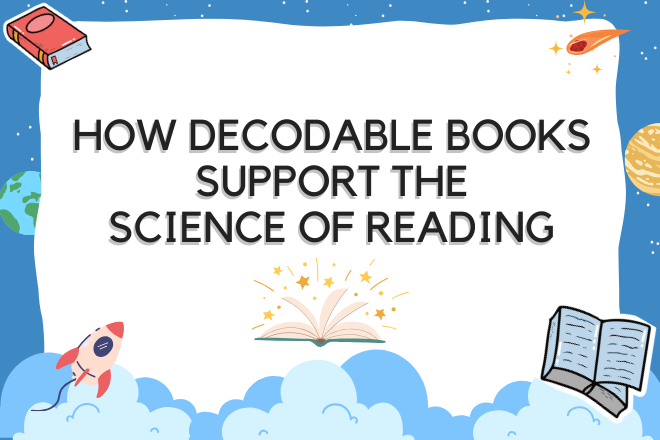How Decodable Books Support the Science of Reading
In the ever-evolving landscape of literacy instruction, educators are continually seeking evidence-based strategies to empower young readers, and the Science of Reading, grounded in research on how the brain learns to read, has become a guiding light for educators. At the heart of the Science of Reading approach lies the powerful tool known as decodable books.
In this blog post, we'll explore how decodable books support the Science of Reading, unlocking the door to proficient literacy for all students.
Systematic and Explicit Phonics Instruction
The Science of Reading emphasizes the importance of systematic and explicit phonics instruction—teaching the relationship between sounds and letters in a structured, logical sequence.
Decodable books are meticulously crafted to introduce phonetic patterns in a sequential manner. By providing a systematic approach to phonics, decodable books ensure that students build a solid foundation for reading success. They are also designed to deliver explicit phonics instruction, leaving no room for guesswork.
Each word in these books follows phonetic rules, enabling students to apply their decoding skills with confidence. This explicit instruction promotes a clear understanding of the alphabetic code, reinforcing the idea that letters represent sounds and that decoding is a predictable, rule-based process.
This type of phonics instruction also helps students develop their phonemic awareness, or the ability to hear and manipulate individual sounds in words, a crucial precursor to reading. Decodable books seamlessly integrate phonemic awareness activities by featuring words with specific sound patterns. This integration helps students connect the sounds they hear to the corresponding letters, laying the groundwork for proficient decoding.
Orthographic Mapping
The Science of Reading emphasizes the concept of orthographic mapping, or the ability to recognize and store words in long-term memory based on their visual and phonetic patterns. Decodable books, with their carefully selected words and patterns, support the development of orthographic mapping by providing repeated exposure to phonetically regular words in meaningful contexts.
Building Fluency and Enhancing Vocabulary
Fluency is a key component of proficient reading, and decodable books contribute significantly to its development. As students read words that adhere to phonetic patterns, they gain fluency by recognizing and decoding these words effortlessly. The repetitive nature of decodable texts reinforces word recognition, allowing students to read with accuracy and expression.
While decodable books primarily focus on phonetic patterns, they also introduce a controlled vocabulary. This controlled exposure to new words helps students expand their sight word vocabulary gradually, providing a balanced approach to word recognition and comprehension.
Differentiation for Diverse Learners
The Science of Reading acknowledges the diversity of learners and the need for differentiated instruction. Decodable books, by offering a progression of difficulty, allow educators to tailor instruction to the individual needs of students. Whether a student is just beginning their reading journey or needs targeted support, decodable books offer a flexible and responsive tool.
Decodable books stand as a powerful ally in the realm of literacy instruction, aligning seamlessly with the principles of the Science of Reading. By providing systematic, explicit, and differentiated instruction, these books empower educators to nurture strong decoding skills and lay the foundation for a lifetime of proficient reading. As we embrace the science-backed approach to literacy, let us celebrate the invaluable role that decodable books play in shaping confident and capable readers.

